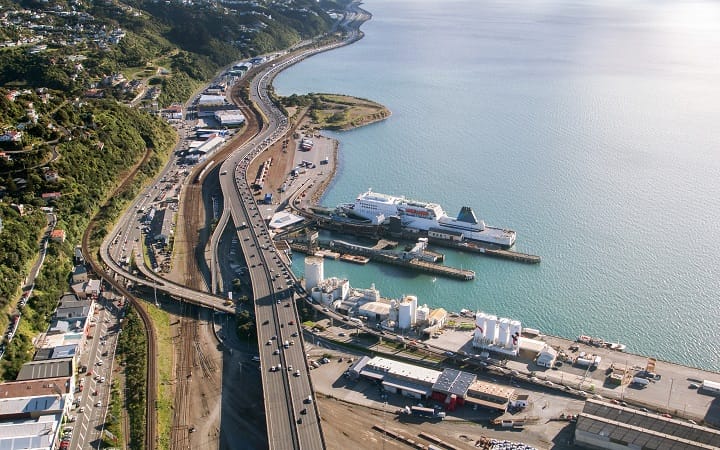- Government confirms two new Cook Strait ferries will enter service by Christmas 2029
- Ferries will carry cars, trucks and up to 40 rail wagons on each sailing
- Project to reuse port infrastructure, reducing taxpayer cost compared to cancelled iReX plan
Two new Interislander ferries with both rail and road capability will begin service across Cook Strait in 2029, according to Rail Minister Winston Peters. The announcement follows Cabinet approval of a revised and significantly cheaper ferry replacement programme that moves away from the previous Government’s cancelled iReX plan.
The new vessels will be about 200 metres long and 28 metres wide, each with the capacity for 1,500 passengers, 2.4km of vehicle lanes, and 40 rail wagons. They will be smaller than the mega-ferries once ordered under the iReX project, which Peters said “created significant infrastructure issues”.
“Our solution will be markedly cheaper than the cancelled $3.1 billion programme and the $4 billion warning the previous Government received,” Peters said. “That’s because of a minimum viable and maximum reuse approach for the port infrastructure.”
Rather than replacing everything, the Government’s new plan focuses on cost-effective upgrades. Marine infrastructure at Picton will be replaced, while in Wellington, existing infrastructure will be modified and reused. Terminal buildings at both ports will remain as they are for now.
The Government also confirmed that a shortlist of shipyards will be finalised by the end of April. The preferred builder will be selected later this year, with full contracts to be locked in before 2026. Ferry Holdings, the new Crown company leading the programme, will take over from Treasury in April and work with KiwiRail, Port Marlborough, and CentrePort to finalise engineering, delivery, and funding plans.
Peters rejected a Ministerial Advisory Group proposal to buy road-only ferries, stating that “road-only ferries came out as more expensive than buying road and rail ferries”. He also said shunting large numbers of rail wagons at once would save both time and money.
While the Government did not disclose a full cost for the new plan, Peters argued it would be “markedly cheaper” than the iReX programme, which ballooned from an initial estimate of $1.4 billion to nearly $4 billion, largely due to extensive port upgrades.
“We have said yes to affordability, and no to extravagance,” Peters said.
By Christmas 2029, the two new rail ferries are expected to replace the ageing Interislander fleet, continuing a 60-year legacy of moving people and freight between the North and South Islands.


